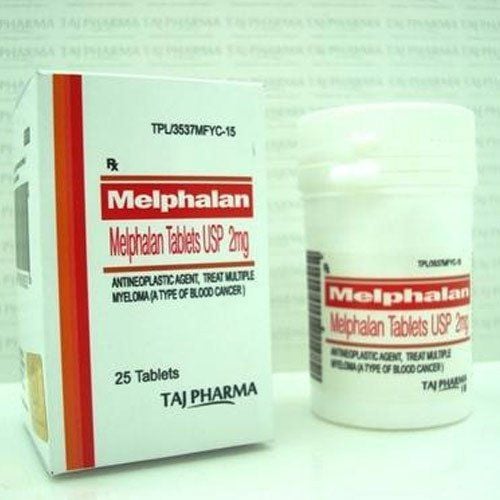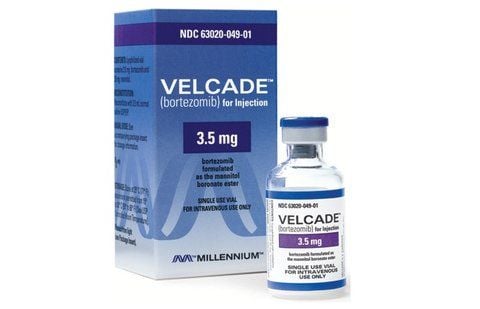This is an automatically translated article.
Pamidronate drug is prepared in the form of powder, concentrated solution, salt form of Dinatri Pamidronate. The drug has the main ingredient Pamidronate (Pamidronate), which is an anti-hypercalcaemia, bone resorption inhibitor and a bisphosphonate derivative.
1. Uses of the drug Pamidronate
What is pamidronate ? The active ingredient in the drug is pamidronate. The main pharmacological action of the Pamidronate component is inhibition of bone resorption. It is absorbed into the calcium phosphate crystals in the bone, which can directly prevent the dissolution of this mineral component of the bone (thanks to its action on osteoclasts and osteoclasts).
Indications for the use of Pamidronate:
Treatment of hypercalcemia in bone cancer; Treatment of Paget's disease; Treatment of osteolytic lesions in multiple myeloma or metastatic breast cancer. Contraindications to the use of Pamidronate:
Patients with hypersensitivity to Pamidronate or to other bisphosphonates.
2. How to take Pamidronate?
Pamidronate powder must be mixed with the attached solvent tube to obtain a concentrated solution. Concentrates should be diluted before infusion with 0.45% or 0.9% sodium chloride infusion solvent, or 5% glucose. The highest concentration was 60mg/250ml (0.24mg/ml).
Note that the infusion rate does not exceed 60mg/hour. It is best given into a large blood vessel to reduce the risk of pain and other side effects. At the same time, note that the concentration of infusion solution does not exceed 90mg/250ml.
3. Dosage of the drug Pamidronate
3.1 In adults Treatment of hypercalcemia in cancer:
Moderate hypercalcaemia (12 - 13.5 mg/dl): Initial dose is 60 - 90 mg, as a single intravenous infusion in at least 4 hours; Severe hypercalcaemia (blood calcium level exceeds 13.5 mg/dl): Initial dose is 90 mg, as a single intravenous infusion over 24 hours; The total dose of disodium pamidronate concentrate can be infused in 1 or more times, infusion over 2 - 4 hours continuously; The maximum total dose for each course of treatment is: 90mg; Repeat treatment: Typically, a significant reduction in serum calcium is achieved within 24 to 48 hours of dosing, usually achieved in 3 to 7 days. If serum calcium is not reached within this time, an additional dose may be given. Response time may vary between patients, and treatment may be repeated at any time when hypercalcaemia recurs. Pamidronate may become less effective as the number of repeat treatments increases. Treatment of Paget's disease:
The recommended dose of Pamidronate/day in patients with moderate to severe Paget disease is 30 mg, diluted in 500 ml of diluent, intravenous infusion over 4 hours, treatment for 3 consecutive days. with a total dose of 90mg; Patients usually respond to treatment in the first week, the effect usually lasts from 5 to 12 months after treatment; Clinicians should periodically monitor disease recurrence, individualizing the need for repeat treatment based on patient responses. May repeat treatment if necessary with the same course as the initial treatment. Treatment of osteolytic lesions in patients with multiple myeloma:
The recommended dose is 90mg, mixed with a concentrated solution in 500ml of diluent, intravenously over 4 hours, once a month. Patients with proteinuria and marked dehydration should be adequately rehydrated before receiving Pamidronate infusion; The duration of treatment has not been determined. However, pamidronate usually has to be taken in a monthly dose once every three to four weeks for at least 21 months. Treatment of osteolytic lesions in patients with metastatic breast cancer:
The usual dose of Pamidronate is 90mg of concentrated solution in 250ml of diluent, intravenous infusion over 2 hours, once every 3 to 4 weeks. The bone pain relief effect usually appears in 2 weeks; In the case of patients with osteolytic lesions, metastatic bone pain related to breast cancer or multiple myeloma, a dose of 90mg should be used, once every 3 to 4 weeks, in combination with breast cancer chemotherapy. 3.2 In other subjects In the elderly: Pamidronate should be used with caution, starting with the lowest effective dose.
In patients with renal failure:
The therapeutic dose should not exceed 90mg, the intravenous infusion time should not be less than 2 hours. For patients with renal impairment, the maximum indicated infusion rate is 20 mg/hour; If a patient has osteolytic lesions with multiple myeloma or has bone metastases with solid tumours, and renal function worsens during treatment with pamidronate, therapy should be discontinued until SCr returns to the baseline 10% SCr range. (SCr before dosing). The minimum infusion time is 4 hours; Worsening of renal function would be defined by a SCr increase of at least 0.5 mg/dl in patients with baseline SCr within the limit of normal (1.4 mg/dl) and an increase of at least 1 mg/dl in those patients with elevated baseline SCr (pre-medication SCr of 1.4 mg/dl or more); Can be based on creatinine clearance (Clcr) for patients with hypercalcemia in cancer: Clcr ≥ 10 ml/min: Use usual dose; Clcr < 10 ml/min: There are 2 cases: If [Ca] > 4.0mmol/l, use a dose of 60mg; if [Ca] < 4.0mmol/l, use 30mg dose. Supplementation with calcium and vitamin D is recommended to reduce the risk of hypocalcemia in patients with metastatic bone resorption or in patients with multiple myeloma. Missed dose: When a dose of Pamidronate is missed, the patient should contact their doctor for management.
Overdose: When taking an overdose of Pamidronate, patients have symptoms of hypocalcemia, convulsions, electrocardiogram changes, paresthesias, hemorrhage, fever, and cramps. The treatment is to treat hypocalcaemia with intravenous calcium, stop taking drugs, give supportive treatment, control calcium, phosphate, magnesium, and potassium ions in the blood; Treatment of fever and hypotension with corticosteroids. At the same time, blood counts should be regularly checked for patients, especially those who use Pamidronate in excess or for a long time. Monitoring methods such as cardiovascular check, blood pressure, body temperature measurement, electrocardiogram are used to control cardiovascular status. In addition, endoscopy should be performed to examine the patient's gastrointestinal tract and take appropriate intervention if necessary.
4. Side effects of the drug Pamidronate
Some side effects patients may experience when using Pamidronate include:
Very common: Fever, weakness, fatigue, headache, insomnia, nausea, vomiting, loss of appetite, diarrhea, constipation, abdominal pain, cough, dyspnea, sinusitis, upper respiratory tract infection, pleural effusion, myalgia, myasthenia gravis, bone pain, arthralgia, pulp necrosis in cancer patients, anemia , thrombocytopenia, granulocytopenia, increased serum creatinine, urinary tract infection, hypomagnesaemia, hypocalcaemia, hypokalemia, hypophosphataemia, inflammatory reaction, fibrosis of the injection site; Common: Atrial flutter, atrial fibrillation, hypertension, tachycardia, fainting, heart failure, edema, hypotension, somnolence, psychosis, inflammation, gastrointestinal bleeding, thrombocytopenia, leukopenia, neutropenia, bone pain, back pain, uremia, depression, rales in the lungs, rhinitis, Candida infection,...; Uncommon: Pain, discomfort, hallucinations, taste abnormalities, microscopic bloody stools, skin rash, angioedema, leukopenia, lymphocytopenia, nephrotoxicity, acute renal failure, increased risk of bone necrosis and fractures (especially osteonecrosis of the jaw), conjunctivitis or other eye disease, angioedema, thrombophlebitis, injection site phlebitis, left ventricular failure, allergies, anaphylaxis, symptoms of infection bacteria, herpes,...
5. Be careful when using Pamidronate
Some notes for patients to remember before and while using Pamidronate drug:
Metabolic parameters related to hypercalcemia such as serum calcium, phosphate, magnesium and potassium levels need to be carefully monitored. ; Avoid excessive water intake when using Pamidronate for patients with heart failure. In this population, Pamidronate should be infused with a smaller amount of diluent; The safety and efficacy of pamidronate have not been studied in patients with severe renal impairment with serum creatinine levels above 5 mg/dl. Only a small number of patients with multiple myeloma have a serum creatinine level of 3 mg/dl in clinical trials; The efficacy and safety of pamidronate in children has not been established; Pamidronate should be used with caution in cardiovascular patients, especially those who are elderly, hypothyroid or have a history of thyroid surgery (at risk of hypocalcaemia); When using Pamidronate, you should check your teeth because Bisphosphonate drugs have the risk of damaging the tooth pulp; Avoid concomitant use of Pamidronate with other Bisphosphonates; Pamidronate is essentially sodium-free; Pamidronate should not be used during pregnancy (except in cases of life-threatening hypercalcemia). If taking medication, it is necessary to get the permission of the doctor; Pamidronate should be used with caution in lactating women; Immediately after taking Pamidronate, patients should not drive or operate machinery as this may cause dizziness or drowsiness.
6. Pamidronate drug interactions
Some drug interactions of Pamidronate include:
Concomitant use of Pamidronate with calcium or vitamin D preparations may antagonize the therapeutic effect of hypercalcaemia; Co-administration of Pamidronate with loop diuretics does not affect the hypocalcemic effect of Pamidronate; Concomitant administration of pamidronate with aminoglycoside antibiotics causes severe hypocalcemia. Therefore, it is necessary to monitor and control calcium and magnesium ions in the blood; When Pamidronate is used together with non-steroidal anti-inflammatory drugs, Pamidronate may increase the effect; Pamidronate drug interacts with thalidomide, causing acute renal failure and the risk of bone marrow destruction (especially bone and teeth). Although there are no specific studies, it is not recommended to use bisphosphonate drugs with parathyroid hormone; Bisphosphonate drugs such as pamidronate can interfere with drugs used in imaging when taking bone scans; Pamidronate should not be mixed with calcium-containing infusion solutions. Pamidronate should be used in a separate intravenous solution, not mixed with other drugs. During the use of Pamidronate, the patient should strictly follow the doctor's instructions. This ensures a better therapeutic effect and reduces the risk of unpredictable side effects.
Follow Vinmec International General Hospital website to get more health, nutrition and beauty information to protect the health of yourself and your loved ones in your family.
Please dial HOTLINE for more information or register for an appointment HERE. Download MyVinmec app to make appointments faster and to manage your bookings easily.













